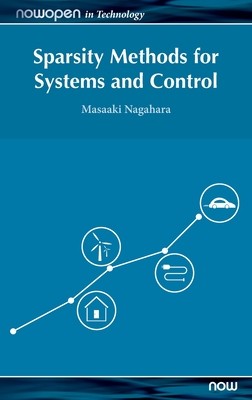
- We will send in 10–14 business days.
- Author: Masaaki Nagahara
- Publisher: Now Publishers
- Year: 2020
- Pages: 220
- ISBN-10: 1680837249
- ISBN-13: 9781680837247
- Format: 15.6 x 23.4 x 1.4 cm, kieti viršeliai
- Language: English
- SAVE -10% with code: EXTRA
Reviews
Description
The method of sparsity has been attracting a lot of attention in the fields related not only to signal processing, machine learning, and statistics, but also systems and control. The method is known as compressed sensing, compressive sampling, sparse representation, or sparse modeling. More recently, the sparsity method has been applied to systems and control to design resource-aware control systems. This book gives a comprehensive guide to sparsity methods for systems and control, from standard sparsity methods in finite-dimensional vector spaces (Part I) to optimal control methods in infinite-dimensional function spaces (Part II).
The primary objective of this book is to show how to use sparsity methods for several engineering problems. For this, the author provides MATLAB programs by which the reader can try sparsity methods for themselves. Readers will obtain a deep understanding of sparsity methods by running these MATLAB programs.
Sparsity Methods for Systems and Control is suitable for graduate level university courses, though it should also be comprehendible to undergraduate students who have a basic knowledge of linear algebra and elementary calculus. Also, especially part II of the book should appeal to professional researchers and engineers who are interested in applying sparsity methods to systems and control.
EXTRA 10 % discount with code: EXTRA
The promotion ends in 21d.15:03:40
The discount code is valid when purchasing from 10 €. Discounts do not stack.
- Author: Masaaki Nagahara
- Publisher: Now Publishers
- Year: 2020
- Pages: 220
- ISBN-10: 1680837249
- ISBN-13: 9781680837247
- Format: 15.6 x 23.4 x 1.4 cm, kieti viršeliai
- Language: English English
The method of sparsity has been attracting a lot of attention in the fields related not only to signal processing, machine learning, and statistics, but also systems and control. The method is known as compressed sensing, compressive sampling, sparse representation, or sparse modeling. More recently, the sparsity method has been applied to systems and control to design resource-aware control systems. This book gives a comprehensive guide to sparsity methods for systems and control, from standard sparsity methods in finite-dimensional vector spaces (Part I) to optimal control methods in infinite-dimensional function spaces (Part II).
The primary objective of this book is to show how to use sparsity methods for several engineering problems. For this, the author provides MATLAB programs by which the reader can try sparsity methods for themselves. Readers will obtain a deep understanding of sparsity methods by running these MATLAB programs.
Sparsity Methods for Systems and Control is suitable for graduate level university courses, though it should also be comprehendible to undergraduate students who have a basic knowledge of linear algebra and elementary calculus. Also, especially part II of the book should appeal to professional researchers and engineers who are interested in applying sparsity methods to systems and control.


Reviews